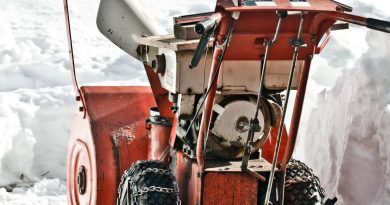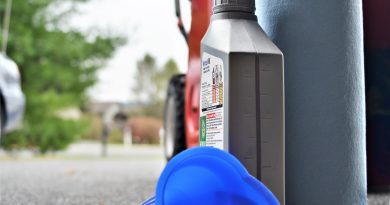How to Stop snow blower clogging in it’s tracks

If you leave on the East Coast, you’re all too familiar with those awesome Nor’Easter blizzards we seem to get on a yearly basis. Often this means heavy, wet slushy snow that even the most powerful snow blower struggles with. If you’re like most people, you need to get the most out of your equipment and can’t keep upgrading to a bigger and better model every year. These wet snows link to bind and clog up chutes, mechanism, and augers; turning your snow blower into a glorified snow cone machine. We have a great, expert tested solution for you.
Disclosure: As an Amazon Associate we earn from qualifying purchases.
Clean your snow blower
A dirty, rusty snow blower gives places for water to latch onto, and possibly freeze if the conditions are right. This can result in faster clogging and less blowing. During the warmer months, use a hose and give the machine a good cleaning. A pressure washer is even better. Remove any rust spots using a wire brush, never dull wadding polish, or other appropriate techniques.
Maximize it’s power
Make sure your snow blower is in top condition, with recently changed oil and fresh fuel. If you’re not sure how to do this, check out our article on how to change the oil in your snow blower. Modern fuels should also have additives put in them to help maximize power and prevent ethanol damage, as well as varnish and gum from long term storage. We looked at some of the best additives on our fuel additives article, check it out.
Lubricate with silicone lubricant spray
This is cheap, easy, and readily available. Silicone’s are hydrophobic, polar molecules that attach themselves to metals and reject water, meaning instead of freezing inside the snow blower; water only has one place to go- OUT. You’ll want to coat the entire auger, auger housing, chute, and metal blades- anything that will be contacting snow. Ideally, you do this before the blizzard, and let the silicone dry on the surface; but in a pinch you can still see results if you already started snow blowing, and forgot to apply the silicone spray.
We think the BEST silicone spray is Liquid Wrench Silicone with Cerflon, since it also contains a solid lubricant additive that helps to lubricate metal and plastic parts. Silicones are not as great when it comes to metal on metal contact and reducing wear, but Cerflon (A form of Hexagonal Boron Carbide with PTFE) does an awesome job. You can find it through the Amazon link below. Other brands will likely work as well, but we’re totally sold on the Liquid Wrench product.
What about Non-Stick Anti Ice Sprays?
We’ve tried these, and like them; but they seem to have about the same durability as the Silicone spray; and seem to cost slightly more than silicone. If you’re more comfortable with a snow blower dedicated product, we like the Dupont Snow and Ice product. If your local retailer is all out, again amazon has you covered through the link below.
Both silicone and the DuPont Teflon spray work great on snow shovels, as well as other surfaces that tend to get snow and ice build up. Just don’t spray it on pavement, as you can create a slippery hazard later on.
What about WD 40 and Kitchen Oil? I heard those can work just as well
We’ve heard this too, but they’re not recommended. Oils will quickly wear off compared to the silicone or non-stick sprays we mentioned above. You’re far better off with the silicone. Food grade oils can also turn rancid and make a smelly mess, as well as attract rodents. Not a good combination for an enclosed garage. Stick with the silicone (or teflon), and stop snow blower clogging for good.




Pingback: Top 5 Snow Blowers for Small Jobs - Diy Outdoor